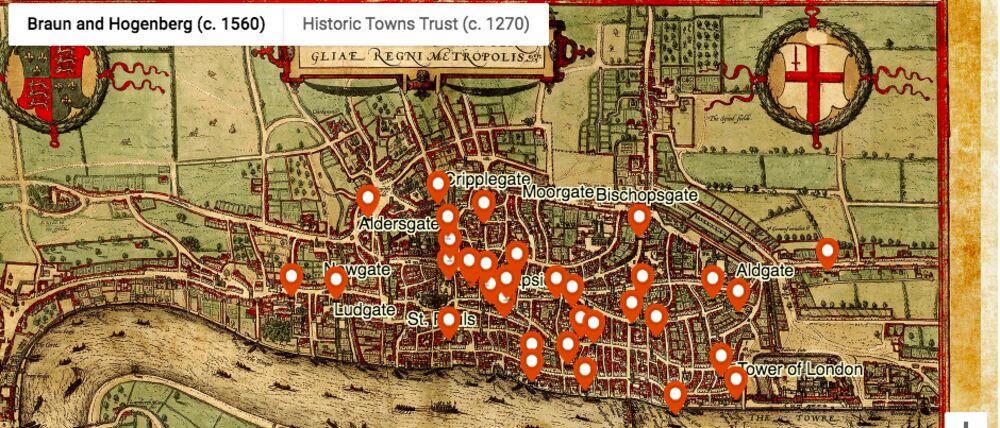If you think London’s crime rate is cause for concern today, imagine what it was like in the 14th century. Back in the late Middle Ages, the city’s murder rate was 15 to 20 times what it is today, and you could be murdered for something as trivial as stealing a handful of wool, or for littering the street with eel skins.
These and other gruesome details emerge from a new map created by Cambridge University’s Violence Research Centre, which details 142 murders committed between 1300 and 1340 that are documented in nine coroners’ rolls that have survived to this day. The crimes are pinned to their exact positions on medieval London’s street plan, searchable by neighborhood, weapon type, and whether the venue was a private or public space. Together, it presents a fascinating glimpse into the violence and instability of life in a city with dangerous living conditions and precious little law enforcement.

It’s not entirely surprising that London’s medieval murder rate was so high, given how heavily armed the population was. As the Violence Research Centre notes, most men carried weapons, typically knives and swords, with esoteric names such as the Trenchour and Misericorde. And arguments could still prove deadly in the absence of a blade. In just under a fifth of murders mentioned on the rolls, the victim was simply bashed to death with a stick.
This sounds grisly, but medieval weapons were actually less deadly than contemporary firearms. Only 32.4 percent of victims listed in the rolls are recorded as having died an instant death. Most of the victims lost their lives some time later, due to blood loss, internal injuries, or the filth and ignorance of medical care that made infections commonplace. Granting a glimpse of the poor living conditions is the case of a saddle tree maker who died three weeks after having his finger cut off in a fight. A relatively light-sounding wound, it seems likely that it slowly, torturously festered its way to becoming fatal.
Other murders suggest people were often already in such frail health that they were easily dispatched. Several people are recorded as dying after being “cuffed” around the head, a light-sounding blow whose fatal results suggest that either that the term was euphemistic or that the victims were already somewhat weak.
The profile that emerges of the average 14th-century-London murderer was also a little different. As today, killers were overwhelmingly male (92 percent of assailants in the records are men), but were not typically members of the marginal classes associated with contemporary criminality. In fact, only three beggars, one purse-cutter, and one sex worker feature in the register as perpetrators. Higher-status individuals feature more frequently, including knights and an astonishing total of 11 priests. Among the crimes recorded among the better-to-do are a priest who stabbed a gardener who caught him stealing apples, and an earl who stabbed a porter who dared to ask him to ride more carefully, after the earl came close to running down a woman with a young child.
The project contains more than these fascinating perspectives on late-medieval urban violence. It also gives tantalizing glimpses of human stories of greed, lust, and punishment.
There’s the chaplain Edmund of Breckles, for example, stabbed by John of Malton in a house more or less on the current site of The Gherkin. Malton stormed in and stabbed Breckles in the belly with a short knife, while the cleric was lying in bed with his concubine, Juliana Aunsel. Juliana, who later admitted complicity in the crime, fled with John to seek sanctuary in a nearby church, from which they were eventually coaxed. Faced with hanging, the two opted to be permanently exiled, traveling separately to the port of Dover, a journey that took John four days and Juliana five.
What became of them? And why did they murder Juliana’s lover if the crime could be so easily detected? These unanswered questions are sure to stick in one’s mind. The idea of this strange knot of grisly, bygone passion and murder taking place where a flashy skyscraper now stands only underlines how many sedimented layers of history are concealed by London modern face.

